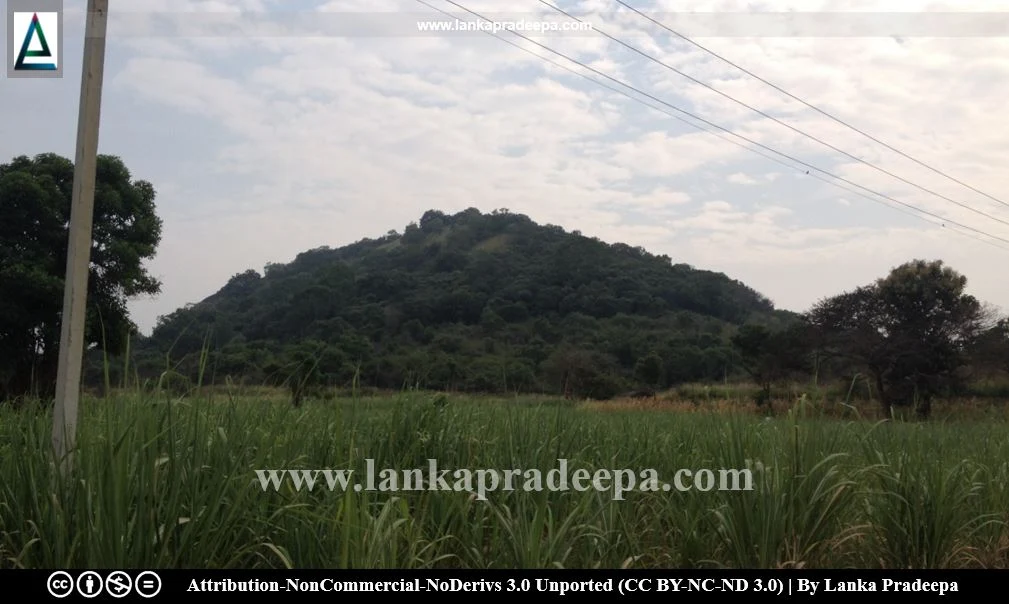
The high-grade basement of Sri Lanka is composed of several iron ore deposits (Cooray, 1984). These can be grouped as; i) magnetite deposits, ii) copper-magnetite deposits, and hydrated iron oxide deposits (Cooray, 1984, Herath, 1995).
Magnetite iron ore deposits

Magnetite deposits have been found in a few places in Sri Lanka such as Wilagedara, Panirendawa, and Buttala. Of them, the magnetite deposit at Wilagedara in the Sandalankawa area was discovered in 1959 while the deposit at Panirendawa in the Chilaw area was found in 1962 (Jayawardena, 1984). Another similar deposit was recorded at Kukurampola in the Buttala area in 2001 (Senaratne et al., 2001). In addition to that, small occurrences of magnetite deposits are found in Mooloya Estate, Hewaheta, and Karametiya (Herath, 1995).
The Wilagedara deposit is the first bedded magnetite deposit discovered in the country (Fernando, 1986). Although the deposit is too small to have any commercial significance, it is of geological interest due to its association with the mineral baryte (Fernando, 1986). The deposit at Panirendawa occurs at depths ranging from 30 m to over 120 m below ground level and because of that, open-cast mining of it is impossible (Herath, 1995). The estimated ore reserve of the Panirendawa deposit is around 5.6 million tons (Jayawardena, 1984). Due to the small tonnage, grade, depth, and discontinuous nature, both Panirendawa and Wilagedara deposits are considered uneconomical (The National Atlas of Sri Lanka, 2007).
Copper-magnetite iron ore deposits
A Copper-magnetite iron ore-type deposit was discovered in 1971 by the Geological Survey Department of Sri Lanka in Seruwila in Trincomalee District. This deposit is composed of magnetite, chalcopyrite, pyrrhotite, and pyrite with several other gangue minerals (Herath, 1995). Investigations have revealed that the deposit is composed of an ore reserve of 4 million tons with 1-2% copper and 40% metallic iron (The National Atlas of Sri Lanka, 2007). The ore occurs up to a depth of about 100 m, which limits the open-cast mining as in the case of the Panirendawa deposit (Fernando, 1986).
Hydrated iron ore deposits
Hydrated iron ore deposits are mainly concentrated in the southwest part of the country, particularly in the Ratnapura District, and less in the Galle and Matara Districts (Jayawardana et al., 2014; The National Atlas of Sri Lanka, 2007). They occur at or near the surface, as in the form of small boulders and hill cappings, or sometimes as embedded lenses or pockets (Fernando, 1986; Herath, 1995). The cappings are not continuous and have a less underground extension of up to 12 feet (Jayawardena, 1984). About 50 deposits with around 2.2 million tonnes of ores have been found.
These ores are highly ferruginous laterite deposits, rich in iron hydroxides mainly of goethite and limonite (Cooray, 1984; The National Atlas of Sri Lanka, 2007). Among the hydrated iron ore deposits found in the country, Dela, Noragolla, Opata, and Poronuwa in Ratnapura District and Wilpita in Galle District are important (Fernando, 1986; Herath, 1995; Jayawardena, 1984). However, due to the small tonnage, scattered nature, and high phosphorous content, these deposits are not considered in the local steel industry (Fernando, 1986; Jayawardena, 1984).
Iron industry in Sri Lanka
Evidence to prove the iron ore utilization activities in the 1st millennium A.D. has been found in the Samanalawewa Area in Ratnapura District (Juleff, 1996).
The Ceylon Steel Corporation is the main steel manufacturer in Sri Lanka today. It was established in 1961, to implement a steel project which included setting up a rolling mill and a wire mill under the first phase (Jayawardena, 1984). The mills were commissioned in 1967 and started to convert the imported steel billets to standard shapes to meet the requirements of the building industry. Under the second phase, a continuous casting electro-smelting plant that is capable of utilizing the local scrap iron was built (Jayawardena, 1984).
Although a few companies have engaged in the production of iron and steel from scrap iron, no iron ore deposits in the country are being used for any local industry (Jayatileke, 2013).
References
1) Cooray, P.G., 1984. An introduction to geology of Sri Lanka (Ceylon). 2nd revised ed. Colombo. National Museum Department. pp.81-83,211-212.
2) Fernando, L.J.D., 1986. Mineral resources of Sri Lanka. Science education series; No. 17. Natural Resources, Energy and Science Authority. Colombo. pp.51-62.
3) Herath, M.M.J.W., 1995. Economic geology Sri Lanka. 5th ed. Ministry of Industrial Development. Colombo. pp.60-70.
4) Jayatileke, S., 2013. Geology and mineral resources in Sri Lanka. Vidurava [vol.30(1)]. National Science Foundation of Sri Lanka. p.13.
5) Jayawardana, D.T., Balasooriya N.W.B., Weerakoon, W.A.P., 2014. Geochemical characteristics of hydrated iron-ore deposit in Dela, Sri Lanka. Journal of Geological Society of Sri Lanka (vol. 16). pp.43-52.
6) Jayawardena, D., 1984. The present state of the development of mineral resources in Sri Lanka. Geological Survey Department. Journal of the National Science Council of Sri Lanka (vol.12). pp.62-63.
7) Jullef, G., 1996. An ancient wind-powered iron smelting technology in Sri Lanka. Nature, 379(6560). p.60.
8) Senaratne, A., Dharmagunawardene, H.A., Fernando, W.A.R., 2001. Discovery of a new primary magnetite deposit in Wellawaya. Annual research sessions, University of Peradeniya, Sri Lanka (vol.6).
9) The National Atlas of Sri Lanka, 2007. 2nd ed. Survey Department of Sri Lanka. ISBN: 955-9059-04-1. p.44.
This page was last updated on 7 May 2023

